Adding a pond to the garden is good for wildlife and a great point of interest too, but equally as important is keeping the pond healthy and including planting to provide shelter, pollen, shade and resting places for wildlife. As well as being good for the pond's eco-system, planting up your pond is also a great way to add extra interest to the garden as there is a wide range of plants available.
You can grow aquatic plants no matter how small or large your garden pond is, but it's important to do your research and make sure you're choosing the right ones.
Read Lia Leendertz's piece on why we should build ponds in our gardens.
Best plants for ponds
Marginal pond plants
Marginal pond plants should be planted around the edges of the pond in shallow water. They help to blend the edges of the pond with the surrounding garden and are the next stage in from bog planting. Marginal plants also play an important role in helping your pond to be more wildlife friendly by providing places for flying insects to land and lay eggs and for aquatic creatures to seek shelter.
Geum rivale (water avens)
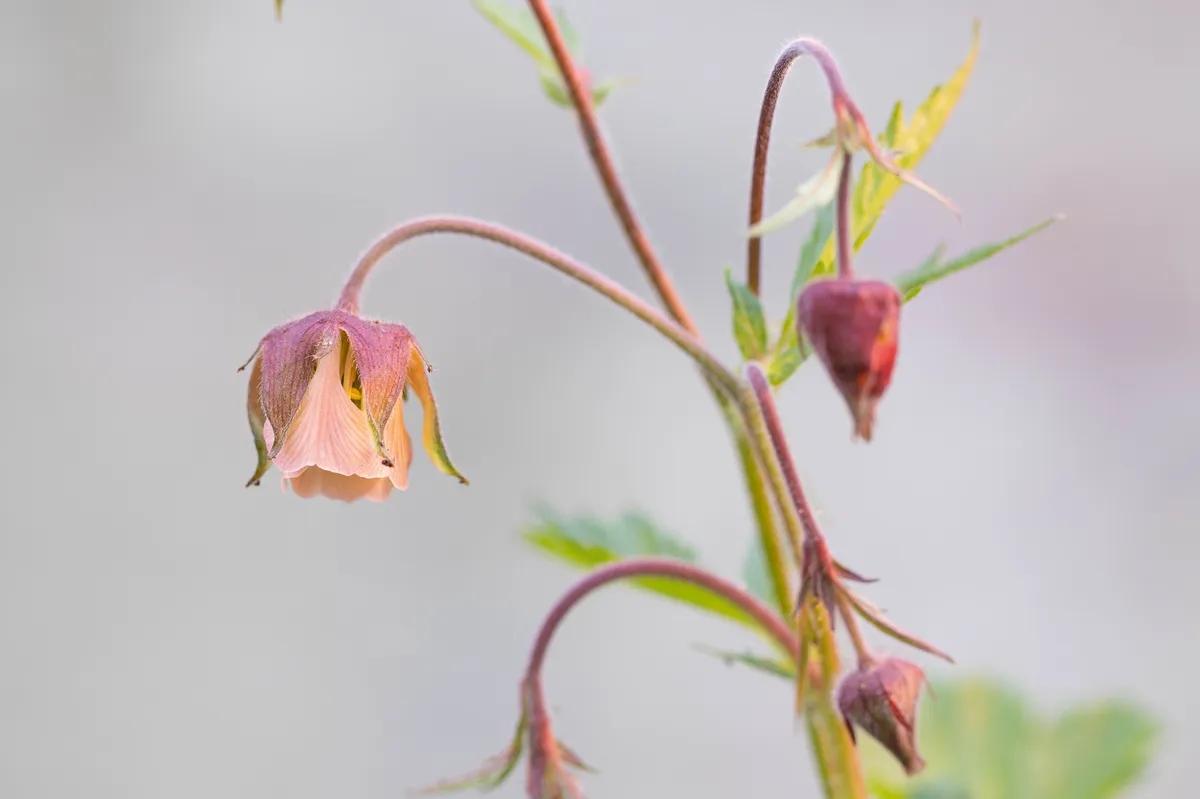
Bell-shaped, dusky-pink flowers on long stems flushed with dark red are the highlight of this herbaceous perennial; the delicate flowers nod in the breeze. Dislikes excessively wet conditions.
Marginal plant. H 40cm. S 25cm. D 0-8cm. RHS H7, USDA 3a-7b.
Equisetum scirpoides (miniature horsetails)

This evergreen perennial is a much smaller version of Equisetum hyemale, but produces dark-green, reed-like stems. Can spread considerably.
Marginal plant. H 15cm. S 45cm . D 0-5cm. RHS H4.
Lychnis flos-cuculi var. albiflora (white ragged robin)
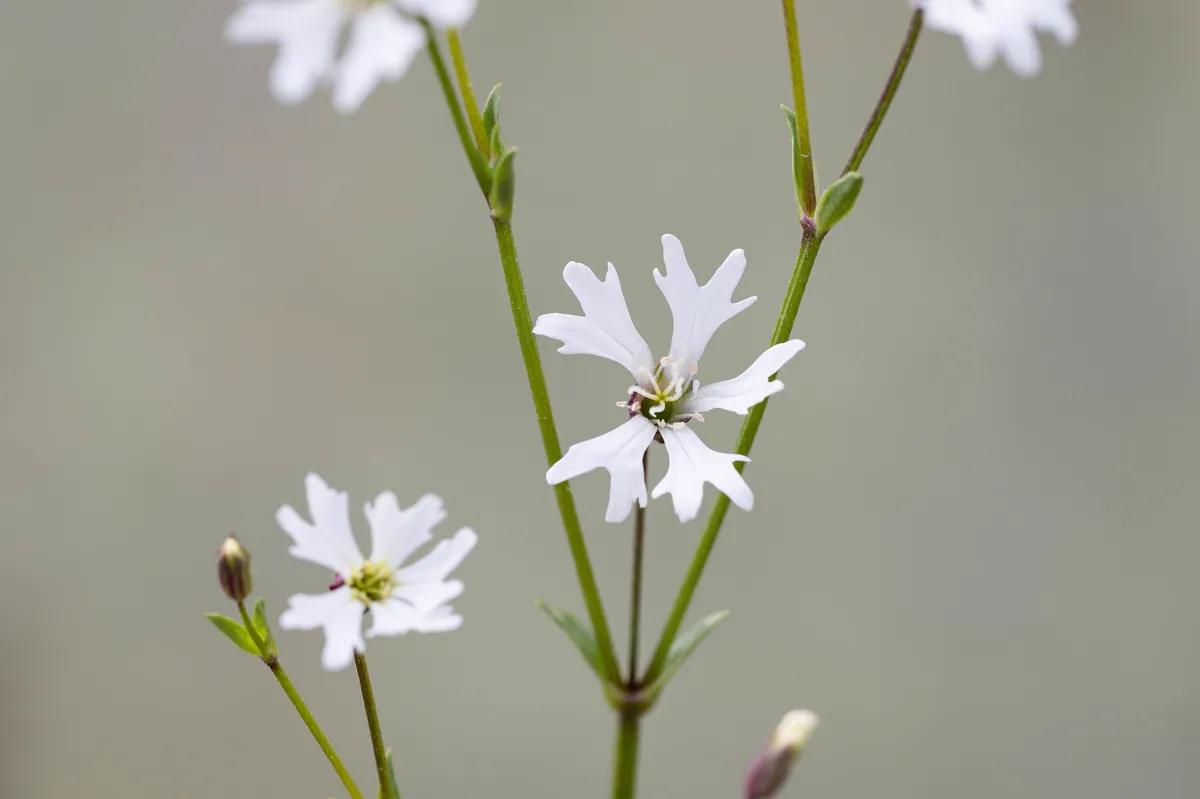
White flowers with deep-cut petals. Once widespread in the UK, it is now rare in the wild due to drainage and loss of wet meadows and ponds. The flowers are valuable for wildlife, rich in nectar and good for bees and other insects.
Marginal plant. H 1m. S 45cm. D 0-10cm.
Cardamine pratensis (lady’s smock)

Also known as cuckoo flower because it coincides with the arrival of the first cuckoo. A favourite of the orange-tipped butterfly, this beautiful, native, perennial herb is also loved by dragonflies. Showy clusters of lilacpink, purple or white flowers top the upright stems from April to June.
Marginal plant. H 45cm. S 30cm. D 0-10cm. RHS H7, USDA 3a-7b.
Equisetum fluviatile (water or swamp horsetail)

Grows in clumps in shallow water in ponds, swamps and ditches. Upright, ridged and jointed stems are banded in yellow-brown, with fertile stems terminating in a flower cone of about 1cm.
Marginal plant. H 30cm1m. S 45cm . D 0-20cm. RHS H7.
Caltha palustris (marsh marigold)

Great for colour in early spring, this native marigold is a herbaceous perennial from the buttercup family, with rich, shiny, golden-yellow flowers and glossy, green, heart-shaped leaves. It loves being in or near the water and if deadheaded will flower from early spring through summer.
Marginal plant. H 30cm. S 40cm. D 10-15cm. RHS H7, USDA 3a-7b.
Eriophorum angustifolium (cotton grass)

Clump-forming, evergreen sedge with grass-like foliage giving rise to pendent, fluffy spikelets in summer. These seedheads of white cotton were once used to stuff pillows and for making candle wicks.
Marginal/bog plant. H 50cm. S 25cm . D 0-5cm. RHS H7.
Oxygenating plants
Oxygenating plants are vital for pond health. They mainly grow under the surface of the water and help to clear the water of impurities and increase oxygen levels.
Hippuris vulgaris (water mare’s tail)

This native plant is a great oxygenator. Its roots extend into the anoxic zone of wetland soils (where oxygen is absent), and create a conduit for the methane produced there to travel up and out. Frogs, newts and fish all love to hide among it. Fibrous roots are good for removing nitrates.
Oxygen plant. H 45cm. S 45cm . D 0-45cm. RHS H7.
Hydrocotyle sibthorpioides ‘Crystal Confetti’ (crystal confetti)
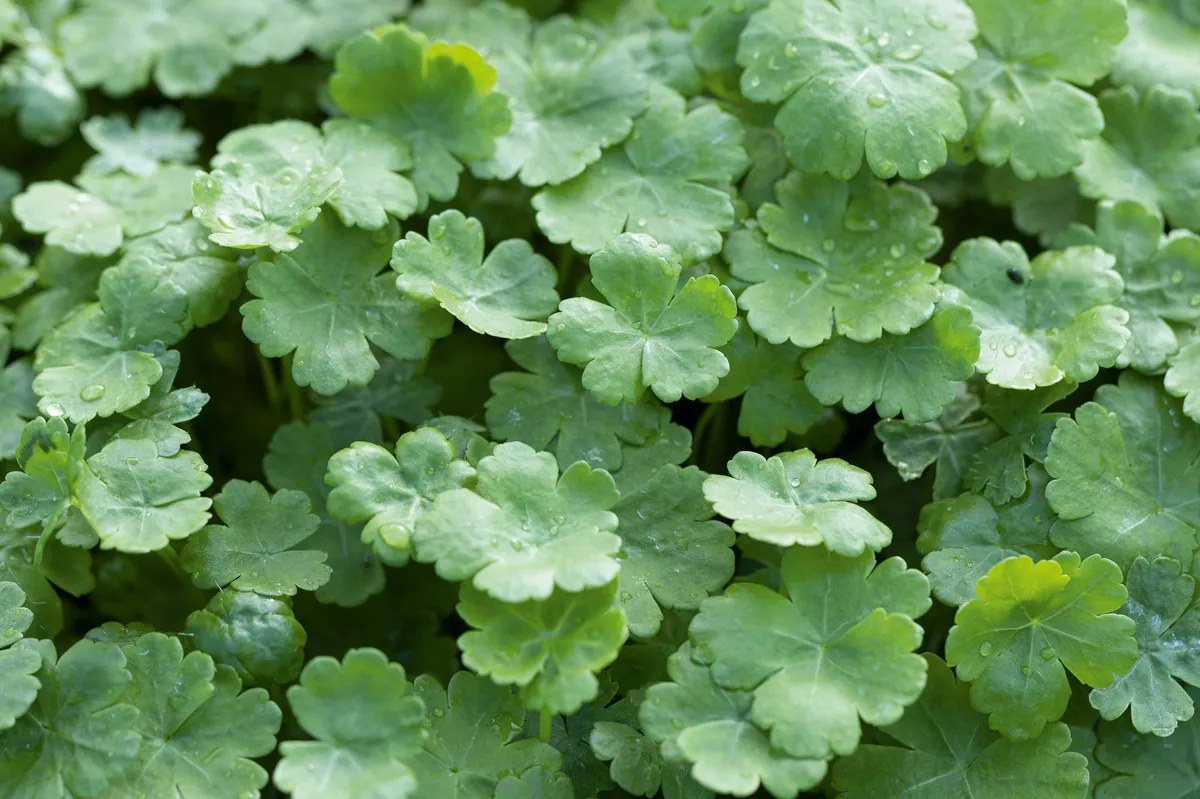
This pretty perennial forms a carpet of miniature, four-leaved, clover-type leaves, edged with cream. A great oxygenator, the fibrous roots are good for removing nitrates. Pond life likes to hide among it.
Oxygen plant. H 45cm. S 45cm . D 0-25cm. RHS H4.
Marsilea quadrifolia (water shamrock)
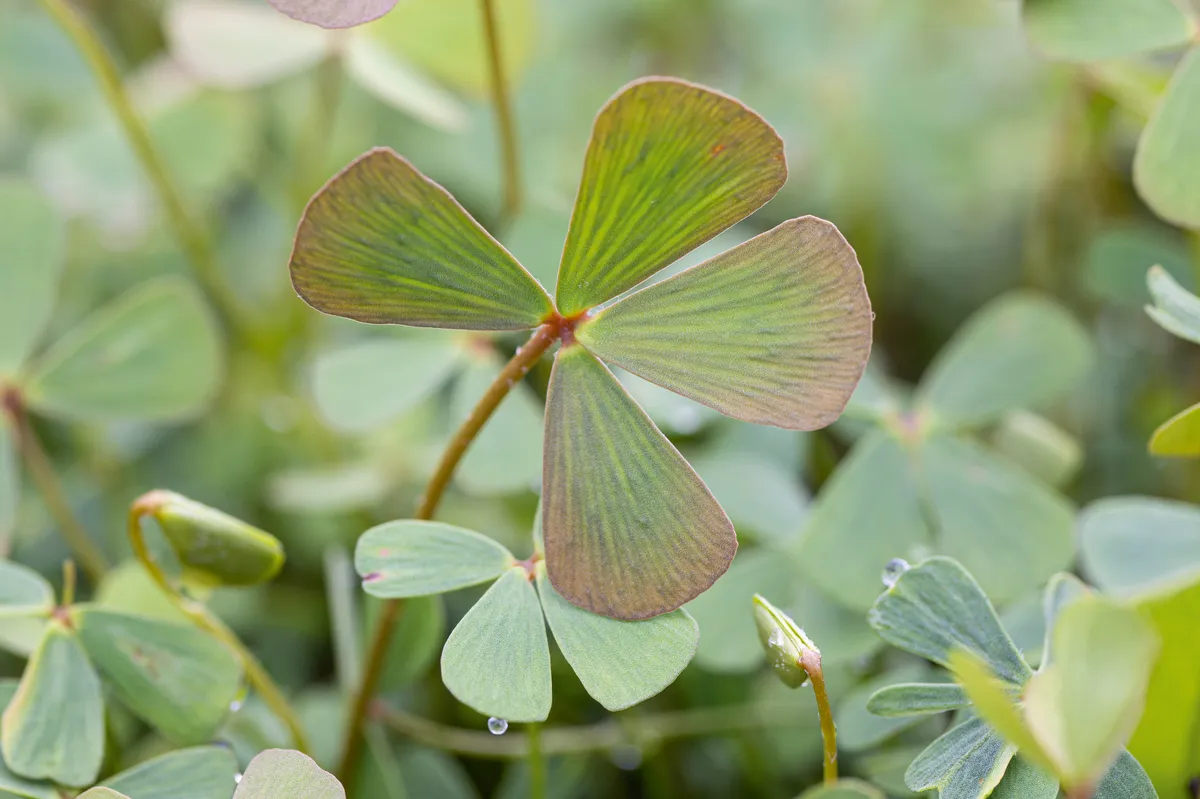
This native oxygenator has an interesting upright appearance. It’s not a real clover – it is an underwater fern – but the fanned, clover-like leaves rise to the water surface creating a decorative pattern. Fibrous roots are good for removing nitrates. Wildlife likes to hide among it.
Oxygen plant. H 25cm. S 45cm . D 0-25cm. RHS H5, USDA 6a-10b.
Floating pond plants
Floating pond plants are an easy way to add extra shading to your pond, which is vital to prevent algae blooms and to keep the water temperature comfortable for wildlife.
Aponogeton distachyos (water hawthorn)
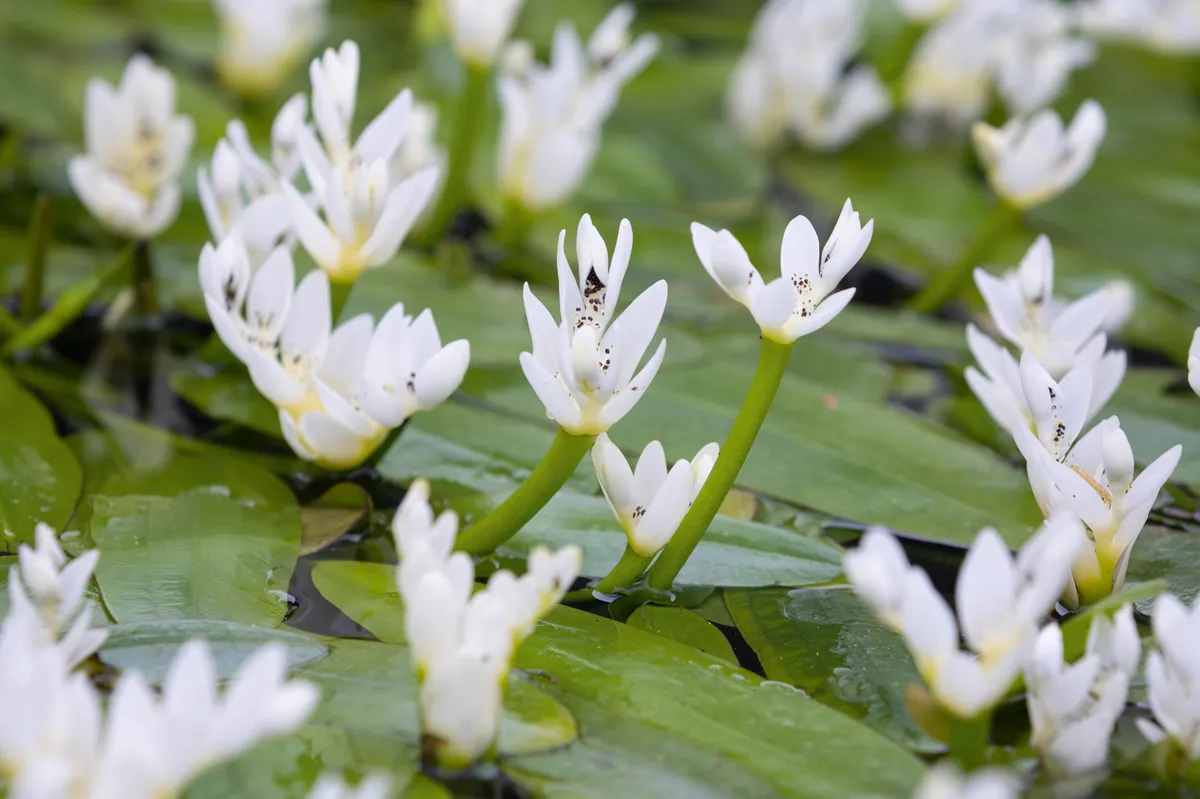
Strongly scented flowers that are often produced in two flushes and can flower for ten months of the year. Almost evergreen in mild winters, it’s a tough and tolerant plant. Good for frogs and newts.
Aquatic floater plant. Height (H) 90cm. Spread (S) 90cm. Depth (D) 10-90cm. RHS H4 † .
Other pond plants to consider
Bog plants
Bog plants are good for growing in the damp or marshy areas around a pond and help to blend the pond planting into the wider garden landscape.
Deep water plants
Deep water plants like water lilies need to be planted where the water is deeper and they have space to grow their stems up to the surface. They are good for adding interest to the centre of the pond and also for providing more shade.
Take a look at these options for ready-made raised ponds.
How to plant up a pond
Dawn Fisher from Lincolnshire Pond Plants gives her tips on things to consider when planting up a pond:
Planting depth It’s really important to think about the planting depth when choosing your plants – from the surface, midway down a pond and into the bottom. For ease of understanding, we always say ‘planting depth’ is the amount of space between the top of the pot and the water surface.
Planting a pond A pond can be any size or shape and thus can have a range of plants in it. There are lots of plant choices for any sized water body, from a large pond in the garden to a water-filled wooden barrel. Most aquatic plants only really want 10cm of water above the top of the plant pot.
Oxygenators give life These plants are crucial as they bring oxygen into the water. They are often sold bunched so they can sink to the bottom of the pond or be placed on different shelves. Be aware that when it’s dark, or when light levels are low, oxygenators take oxygen out of the water and release carbon dioxide – even though during the day they emit oxygen.
Water nutrients If you’re getting too much blanket weed, it’s usually down to two things: too many nutrients and too much sunlight. Use fibrous-rooted aquatics, such as Alisma lanceolatum (narrow-leaved water plantain), irises and aquatic grasses, which can help reduce blanket weed by ‘eating’ the nutrients. Other plants, such as bullrushes (Typha species), can take up iron and salts from the water.
Welcoming wildlife Any pond can welcome aquatic pond life, including newts and frogs. Remember that fish will eat a lot of the wildlife in your pond, so decide from the outset whether you want to create a wildlife pond or an ornamental fish pond.
You can also read our tips for creating a wildlife pond.
If you want to create a new pond in your garden, see our guide to the best raised ponds you can buy right now.
